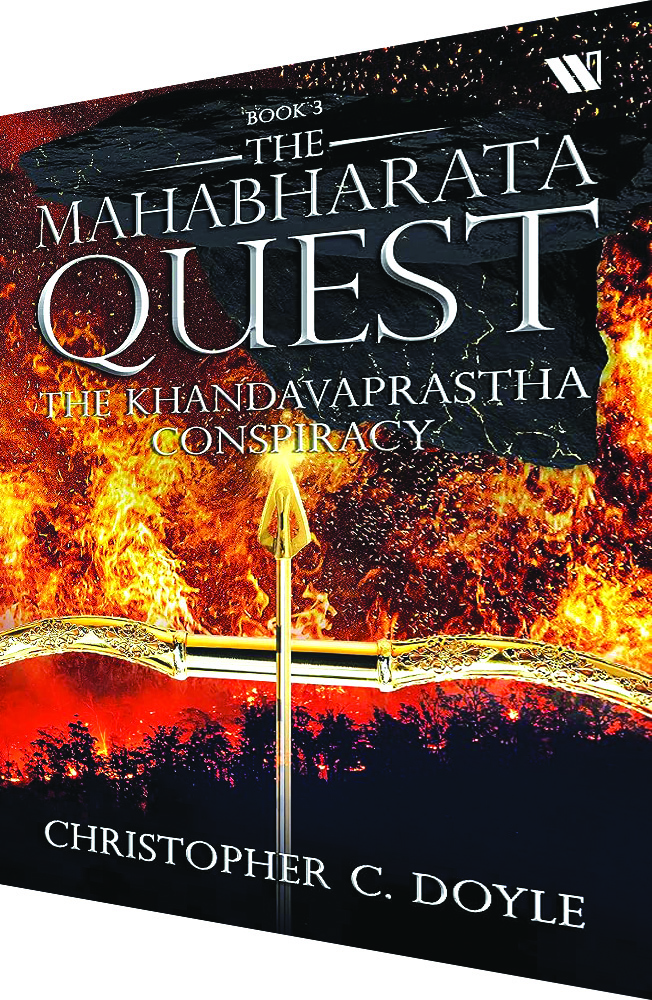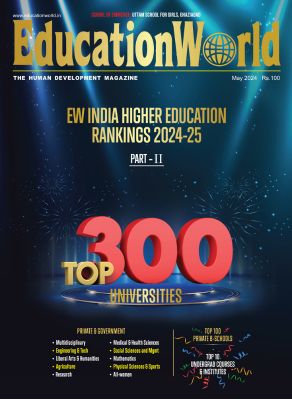 The Mahabharata quest: the Khandavaprastha conspiracy
The Mahabharata quest: the Khandavaprastha conspiracy
Christopher C. Doyle
Westland
Rs.499 391 pages
This fast-paced thriller blends mythology, science fiction and historical facts so smoothly that the reader feels this is a factual account with an air of verisimilitude
Creating fiction, poetry and drama based on the Mahabharata, Ramayana or the Puranas is a well-established tradition in Sanskrit and the Bhashas. Indian English novelists and poets have turned to reinterpretations of Hindu mythology in a big way only in the 21st century: the 20th century had just a few writers, like K.R. Srinivasa Iyengar, Sri Aurobindo and TP Kailasam who attempted this. Christopher C. Doyle has gone a step further; having studied the Mahabharata for 15 years, he makes good use of incidents in the epic to build up his series of thrillers.
Doyle gives the correct chronology of events through a close reading of the Adi Parva, the first book of Vyasa’s Mahabharata. Many years after Indraprastha was built and the new kingdom established, Krishna and Arjuna were approached by Agni, the god of fire, who wanted to recover his lustre by ‘eating’ the Khandava forest and all its creatures. Doyle provides a scientific explanation for why Krishna and Arjuna set fire to the forest, killing all its inhabitants. Only five birds, Takshaka’s son and the Asura Maya escaped the conflagration.
The main characters of The Mahabharata Quest series were first introduced in The Mahabharata Secret (2013). Vijay Singh attempts to understand the cryptic emails his uncle Vikram Singh had sent him before he was murdered. Vijay’s childhood friend Radha, her father Dr. Shukla, who is a linguist and Sanskrit scholar, and Imran Kidwai, an officer from the Intelligence Bureau, help him. In The Alexander Secret (2014), the first book of The Mahabharata Quest, the team tries to find the hidden cave which contains the elixir of immortality.
Clues lie in a new reading of the Mahabharata combined with a small cube found in the tomb of Alexander’s mother. A mysterious organisation, the Order, is on the same quest, but with nefarious intent. Other countries of the world join India and the US in setting up the Global Task Force (GTF) to fight techno-terrorism. In The Secret of the Druids (2016), links between Druids and the Mahabharata are revealed. The GTF unravels the mystery behind Julius Caesar’s repeated invasions of Britain, while foiling the evil plans of the Order.
This book has the GTF investigating a deadly disease. Doctors have not been able to isolate any pathogen which could be causing the variety of symptoms the patients develop. The only common factor is that ‘patient zero’ in each country seems to have had some contact with China. As was the case with Covid-19, the fictional Chinese government refutes all allegations of a Chinese origin for the disease.
There is also another mystery: the disappearance of Alex Wilson, author of a biography of the explorer Alexander von Humboldt. An anonymous organisation stops publication of his book by threatening to blow up the publisher’s offices. Vijay suspects that the Order is behind this. By examining old documents in libraries, they conclude that the Chinese and the Order are looking for something hidden in Calcutta by British explorer Thomas Manning (1772-1840).
Events happen in accurately described actual places, such as the Bodleian Library and the Radcliffe Camera in Oxford, or the Dorchester Hotel, London. Testing the new, artificially created pathogen on the Uyghur population sounds very real (the inhuman conditions in China’s Uyghur detention camps have been widely reported). The final chapters of the book take the reader on a tour of Calcutta; the novelist paints a word picture of the city as it is now and as it was in the first quarter of the 19th century. The novel ends with a six-page report, ‘Extract from the GTF Dossier Reporting on the China Mission’, explaining the science behind the fictional ‘mirror microbe’ and its antidote based on snake venom.
The novelist observes, “There are a lot of facts — scientific, historic and others — that I have used to craft this story. However unbelievable some facts may be, they are true. Here’s where I help you to distinguish fact from fiction.” The nine pages of ‘Last Notes’ are devoted to science, history, the Mahabharata and other issues like China’s treatment of Uyghurs. Readers who want to delve further into the sources are invited to join the free-of-charge ‘The Quest Club’ which has a bibliography of 300 items and ‘bonus chapters’ not included in this book.
This fast-paced thriller blends mythology, science fiction and historical facts so smoothly that the reader feels it is a factual account, especially because Doyle gives precise dates of past events. Sanskrit verses from the Mahabharata are printed in the Devanagari script, bestowing an air of verisimilitude on all quotations.
The epigraph is a long quotation from the Owen Manuscript by Susruta, with an image of a palm leaf manuscript. But for the very informative ‘Last Notes’, the reader would be unaware that no such manuscript exists.
Shyamala A Narayan (The Book Review)




























